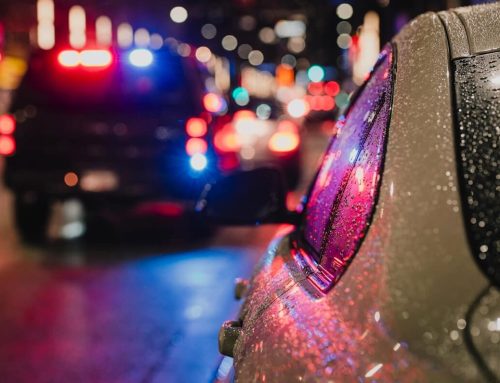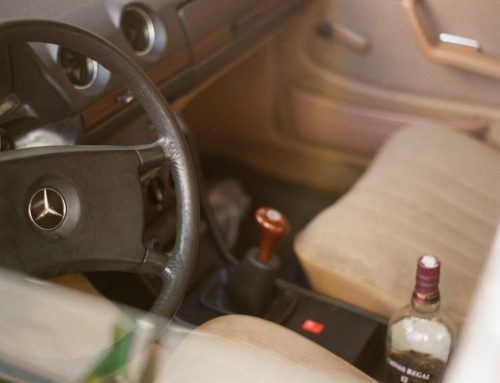Vehicular accidents are horrifying enough without adding injury or death to the scene. Being responsible for injuring or killing someone while driving would have to be categorized as anyone’s worse nightmare. When either or both parties are responsible for an accident that caused a death, there will be legal consequences.
Obviously, no one intentionally sets out to kill someone while driving on the road. There are always extenuating circumstances, but extremely few would be deemed acceptable or legal. A breach of the motor traffic regulations resulting in death would not be considered murder, but rather an involuntary manslaughter.
The basic definition of vehicular manslaughter or vehicular homicide is as follows:
Vehicular homicide is a crime that involves the death of another person besides the driver. The driver would then be charged with “criminally negligent” driving – unintentional vehicular manslaughter.
Driving that results in Vehicular Manslaughter
Nearly all auto manslaughter incidents are the result of a the following types of vehicular behaviours.
Negligent Driving
In many cases, driver carelessness is responsible for an accident that results in death. Negligence generally refers to lack of attention while driving, such as if the driver glances away from the road to do something quickly, like turn on the radio or reach for something in the console. Unfortunately, this behaviour is all too common. These days there are so many distractions and many drivers now multi-task thinking they still have command of the road.
Criminal negligence
With a criminal negligence case, the driver has acted over and above simple negligence explained above. The driver would have driven well over the speed limit, failed to abide by traffic lights or signals, drove on the wrong side of the road, or failed to stop in time to avoid hitting other cars. This type of situation is referred to as violating a safety statute and is considered more egregious that negligence. Drivers who are reckless and careless with no regard for others falls into the criminal negligence category.
Driving while intoxicated
In a report by Madd-Canada, crashes involving alcohol or drugs are the leading criminal cause of death in Canada. Every single day, up to four Canadians are killed in motor vehicle accidents. There is no real defence for driving after drinking too much alcohol. Intoxication is easily proven with standard blood-alcohol tests that come in many forms, i.e. breathalyzer, urine tests, etc. Drivers who drive under the influence of prescribed or street drugs may also be charged with vehicular manslaughter if they caused an accident that resulted in death.
Falling Asleep While Driving
More people fall asleep at the wheel than most people realize. When someone’s death is caused by an asleep-at-the-wheel driver, there is a fundamental question as to whether the driver was negligent or reckless. The driver may still be charged with manslaughter evenif there are extenuating circumstances, such as working extra-long hours. Since the driver chose to put themselves in that situation, it is a tough defence.
The Other Driver
There are auto accidents where both drivers are deemed responsible for the outcome. Perhaps both cars were driving too fast or one was driving too fast and the other drove through a red light causing a death. This is referred to as contributory negligence.
The Other Passenger(s)
There are also situations when a non-driver contributes to the cause of an accident resulting in death. For example, the person who is sitting in the passenger or back seat may have distracted or impaired the view of the driver. Or the passenger was intoxicated and grabbed the steering wheel and took it off course, resulting in a fatal accident. In cases like this, the passenger might be charged with second-degree vehicular homicide.
Possible Defences
In Canada, the Criminal Code has a series of concessions that cover driving offences that cause death, such as:
- dangerous driving
- criminal negligence
- failure to stop for police
- street racing
- impaired driving
- hit and run driving
The maximum penalty for dangerous driving causing death is 14 years’ imprisonment. If the vehicular fatality was caused by any of the above provisions, the maximum penalty could be life imprisonment. Those who are sentenced to life imprisonment are eligible to apply for parole after serving 7 years. As with any life sentence, there is no guarantee of parole.
Jaswal & Krueger
If you are facing charges of vehicular manslaughter, get a legal professional involved immediately. Our experienced criminal defence attorneys will be able to determine the pros and cons of the case, by carefully absorbing your memories of the incident and the evidence against you. We will discuss the best options for your situation and determine whether negotiation or a trial will be in your best interest.
We have offices in Surrey and Vancouver, BC, for your convenience. Contact us immediately for an initial consultation at 604-585-8898.












